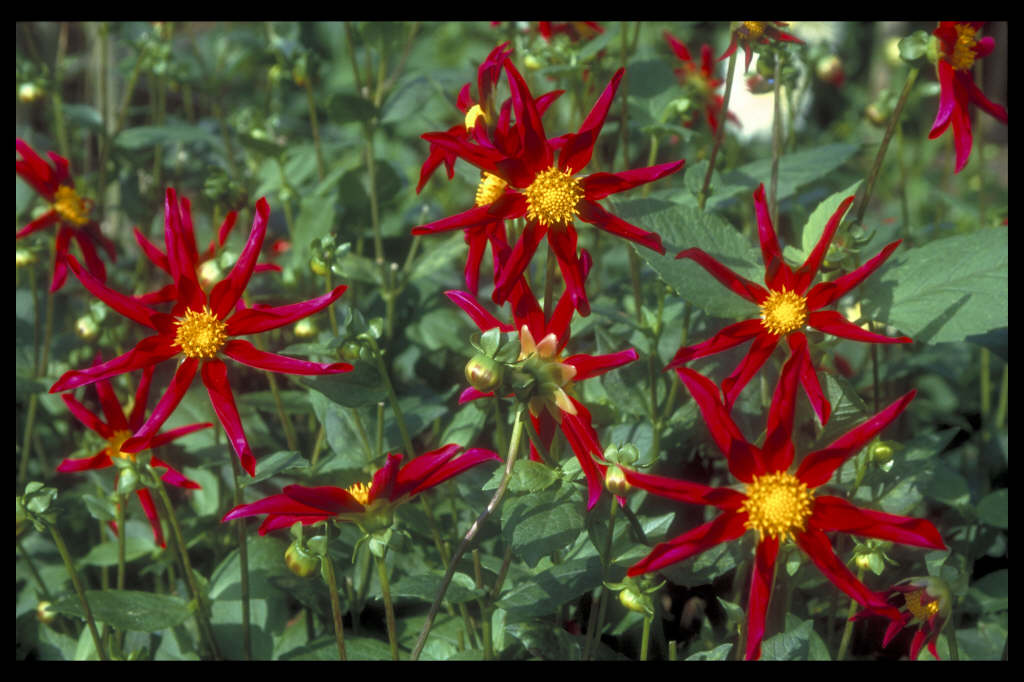Dahlia 'Marie Schnugg' (SinO)

dahlia 'Marie Schnugg'
A compact, tuberous-rooted perennial to 1.3m tall, the single flowers to 10cm across, with well-spaced, broad but inrolled vivid red florets, tipped magenta-purple at the edges and surrounding a yellow disk

Buy this plant
Size
Ultimate height
0.1–0.5 metresTime to ultimate height
1–2 yearsUltimate spread
0.1–0.5 metresGrowing conditions
Moisture
Moist but well–drainedpH
Acid, Alkaline, NeutralColour & scent
| Stem | Flower | Foliage | Fruit | |
| Spring | Green | |||
|---|---|---|---|---|
| Summer | Red | Green | ||
| Autumn | Red | Green | ||
| Winter |
Position
- Full sun
Aspect
South–facing or West–facing
Exposure
Sheltered Hardiness
H3Botanical details
- Family
- Asteraceae
- Native to GB / Ireland
- No
- Foliage
- Deciduous
- Habit
- Bushy
- Potentially harmful
- All parts may cause severe discomfort if ingested and may irritate skin. Wear gloves and other protective equipment when handling
- Genus
Dahlia are tuberous rooted perennials with pinnately divided leaves and showy flowerheads, double in many cultivars, in summer and autumn
- Name status
Accepted
- Horticultural Group
- Single Orchid, or Star, dahlias have flowerheads with a single ring of outer florets surrounding the central disc; these florets are uniformly either incurved or recurved
How to grow
Cultivation
Grow in fertile, humus-rich, well-drained soil, enriched with organic matter, in full sun. Pinch out growing tips to encourage bushy plants and stake - see staking perennials. Water as needed in dry periods. Lift and store tubers in autumn to replant, or use as a source of cuttings, in spring. See dahlia cultivation and our video How to plant dahlia tubers and care tips
Propagation
Propagate by softwood cuttings taken in spring from shoots from stored tubers, or divide the tubers ensuring each division has a viable bud
Suggested planting locations and garden types
- City and courtyard gardens
- Coastal
- Cottage and informal garden
- Wildlife gardens
- Flower borders and beds
Pruning
Deadhead to prolong flowering. Cut back to near ground level in the autumn, before lifting and storing for the winter
Pests
May be susceptible to aphids, capsid bug, earwigs, caterpillars and glasshouse red spider mite
Diseases
May be susceptible to a virus, tubers may rot in store
Get involved
The Royal Horticultural Society is the UK’s leading gardening charity. We aim to enrich everyone’s life through plants, and make the UK a greener and more beautiful place.